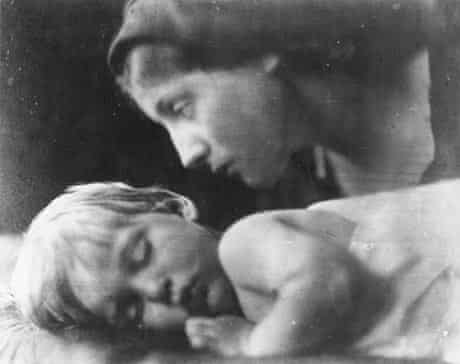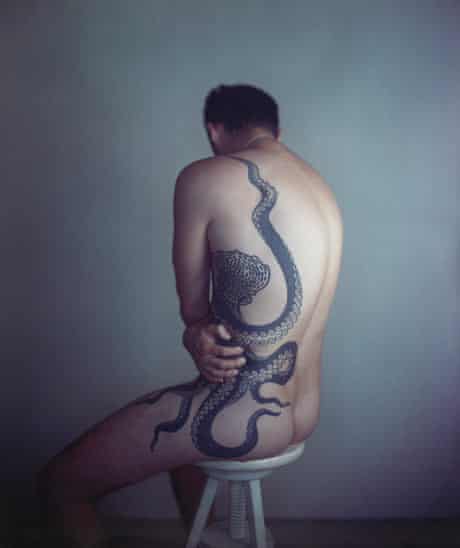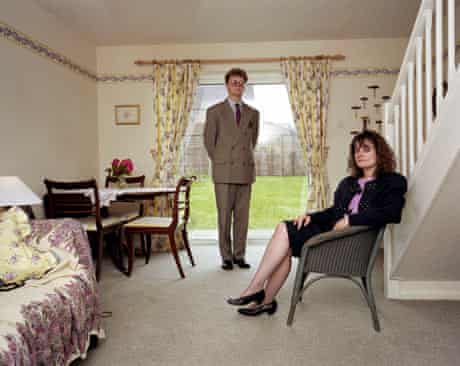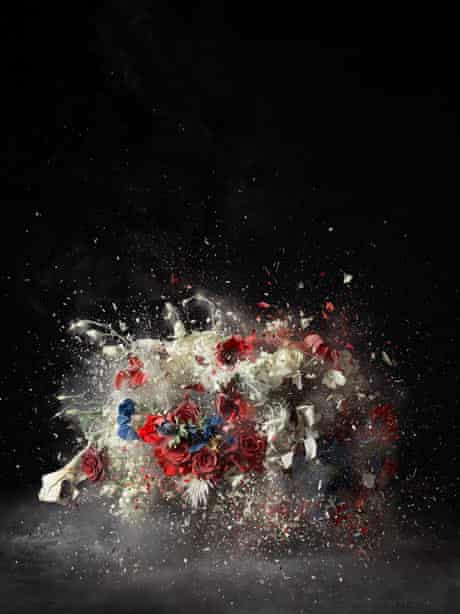If Photography Is an Art What Kind of Art Is It?
F or 180-years, people have been asking the question: is photography art? At an early meeting of the Photographic Society of London, established in 1853, 1 of the members complained that the new technique was "too literal to compete with works of art" considering it was unable to "elevate the imagination". This conception of photography as a mechanical recording medium never fully died abroad. Even by the 1960s and 70s, art photography – the idea that photographs could capture more than just surface appearances – was, in the words of the photographer Jeff Wall, a "photo ghetto" of niche galleries, aficionados and publications.
Simply over the past few decades the question has been heard with ever decreasing frequency. When Andreas Gursky's photograph of a grayness river Rhine under an as colourless sky sold for a globe record cost of £ii.vii 1000000 last year, the debate was effectively over. As if to requite its own patrician signal of approval, the National Gallery is now property its offset major exhibition of photography, Seduced by Art: Photography By and Present.
The show is non a survey but rather examines how photography's earliest practitioners looked to paintings when they were offset exploring their engineering'southward potential, and how their modern descendants are looking both to those photographic former masters and in plow to the onetime main paintings.
What paintings offered was a catalogue of transferable subjects, from portraits to nudes, yet lifes to landscapes, that photographers could mimic and suit. Because of the lengthy exposures necessary for early cameras, moving subjects were impossible to capture. The earliest known photograph of a person was taken inadvertently by Louis Daguerre – with Henry Fox Talbot one of photography's ii bang-up pioneers – when he fix his photographic camera high above the Boulevard de Temple in Paris in 1838. His 10-infinitesimal exposure time meant that passing traffic and pedestrians moved as well fast to register on the plate, but a boulevardier stood still long plenty for both him and the bootblack who buffed his shoes to exist captured for ever.
When Daguerre turned his camera on people rather than places the results were revelatory. Elizabeth Barrett Browning was and then struck by Daguerreotypes that she rhapsodised over "the very shadow of the person lying there fixed forever". The fidelity of features captured meant that she "would rather accept such a memorial of one I dearly loved, than the noblest Artist's piece of work ever produced" not "in respect (or boldness) of Art, simply for Love's sake". If, nonetheless, her photographer followed the advice of Eugène Disdéri, who wrote in 1863 that: "It is in the works of the great masters that we must study the simple, yet grand, method of composing a portrait," she could satisfy love with both physiognomy and art.

What some pioneering photographers recognised straight away was that photographs, like paintings, are artificially synthetic portrayals: they as well had to be carefully equanimous, lit and produced. Julia Margaret Cameron fabricated this explicit in her re-envisagings of renaissance pictures. Her Light and Love of 1865, for instance, shows a woman in a Marian headcovering angle over her infant who is sleeping on a bed of straw. It is role of a line of nativity scenes that is as long every bit Christian art, and was hailed by ane critic as the photographic equivalent of "the method of cartoon employed by the neat Italian masters". I Wait, 1872, shows a child with angel's wings resting its mentum on folded arms and wearing the bored expression that brings to mind the underwhelmed cherubs in Raphael's Sistine Madonna. Such photographs were non direct quotations from paintings, but they raised in the viewer'south mind a string of associations that gave photography a historical hinterland.
If Cameron and contemporaries such equally Oscar Rejlander and Roger Fenton (who took numerous photographs of still-life compositions of fruit and flowers every bit well as his amend known pictures of the Crimean war) were keen that their photographs should reflect their own noesis of art, the links went both means. In 1873, Leonida Caldesi published a book of her photographs of 320 paintings in the National Gallery, and her intended audience was not merely the public but artists themselves, for whom the photographs were both more than accurate and more affordable than engraved reproductions. Past 1856, thanks to Fenton's photographs, artists could written report classical statues in their own studios.

It was possibly in depicting the nude – such as Fenton's bestselling photograph of the discus thrower Discobolus – that photography could repay its debt to art. Hiring a life model was expensive, and engravings were a poor substitute. Delacroix was i artist who "experienced a feeling of revulsion, almost disgust, for their incorrectness, their mannerisms, and their lack of naturalness". He praised instead the painterly help provided by académies (books of nude photographs) since they showed him reality: "these photographs of the nude men – this human being torso, this admirable poem, from which I am learning to read". He fifty-fifty helped the photographer Eugène Durieu pose and light his models. And in 19th-century United kingdom of great britain and northern ireland and French republic, when pornography was illegal, photographs of the nude were in demand from customers who had no artistic interests.
When it came to landscape photography the new medium appeared only every bit the impressionists were beginning to work in the open air. Some commentators saw photography'south real claiming to painting equally lying in its ability to capture what the photographer and journalist William Stillman chosen in 1872 "the affidavits of nature to the facts on which art is based" – the random "natural combinations of scenery, exquisite gradation, and furnishings of sun and shade". Another practitioner, Lyndon Smith, went further, declaring landscape photography the answer to the "effete and exploded 'High Fine art', and 'Classic' systems of Sir Joshua Reynolds" and "the cold, heartless, infidel works of infidel Greece and Rome".
Being new was a laborious business, however. Eadweard Muybridge, the British-born photographer who first captured animals in motion and every bit a consequence ended the former painterly convention of showing horses running with all four legs off the basis, was primarily a landscape photographer. His pictures of the Yosemite wilderness, for example, involved carrying weighty cameras, boxes of drinking glass negatives, as well every bit tents and chemicals for a makeshift darkroom, upwardly mountains and through forests. Monet's painting expeditions by contrast required only paint and canvas.

If early photographers had no option just to negotiate their ain engagement with painting their modern descendants tin call on near two centuries of photographic history. Information technology is a point the exhibition makes by combining old and new. So when a contemporary lensman such as Richard Billingham photographs an empty expanse of ocean and sky in Rothko washes of slate blues and greys (Storm at Sea) he is referring to a heritage that encompasses both the monochrome tonality of Gustave Le Gray'due south atmospheric photographic seascapes of the 1850s and a painting such as Steamer on Lake Geneva, Evening Upshot, 1863, by the Swiss artist François Bocion.

The betoken is fabricated beyond the different media. A breakable portrait of a suburban couple from Martin Parr's 1991 album Signs of the Times, for example, is assorted with Gainsborough'southward Mr and Mrs Andrews of 1750. Both are images of possession and entitlement, the latter displaying landowners at ease amidst their fields and forest, comfortable with both themselves and their station, the former a couple posing stiffly in their sitting room.

Meanwhile a 19th-century flower painting by Henri Fantin-Latour is the starting point for Ori Gersht's fragmented blooms, Blow Up. Gersht froze his flowers with liquid nitrogen before exploding them with a pocket-sized accuse and photographing the petals turned to flying shards. Among the nudes, Richard Learoyd's Man with Octopus Tattoo, 2011, is placed next to the gallery's 1819-39 painting of Angelica Saved by Ruggiero by that connoisseur of bodily curves, Ingres. The appeal of mankind and its sinuosity is timeless.
The curators of the National Gallery exhibition have avoided using many of contemporary photography'southward biggest names (there is no Andreas Gursky and no Cindy Sherman for case), and nor do they include photorealist painters such as Gerhard Richter or Andy Warhol. Their choices are largely less celebrated figures as if to show how deep is the seam of photographers still working with the long visual by. When in 1844-6 Fox Talbot published his thoughts nearly photography he gave the book (the beginning publication to contain photographic illustrations) the title The Pencil of Nature. This exhibition lays out what photography's founding father could never know: how the photographic camera has also e'er been the pencil of art.
johnsonprepireare.blogspot.com
Source: https://www.theguardian.com/artanddesign/2012/oct/19/photography-is-it-art
0 Response to "If Photography Is an Art What Kind of Art Is It?"
Post a Comment